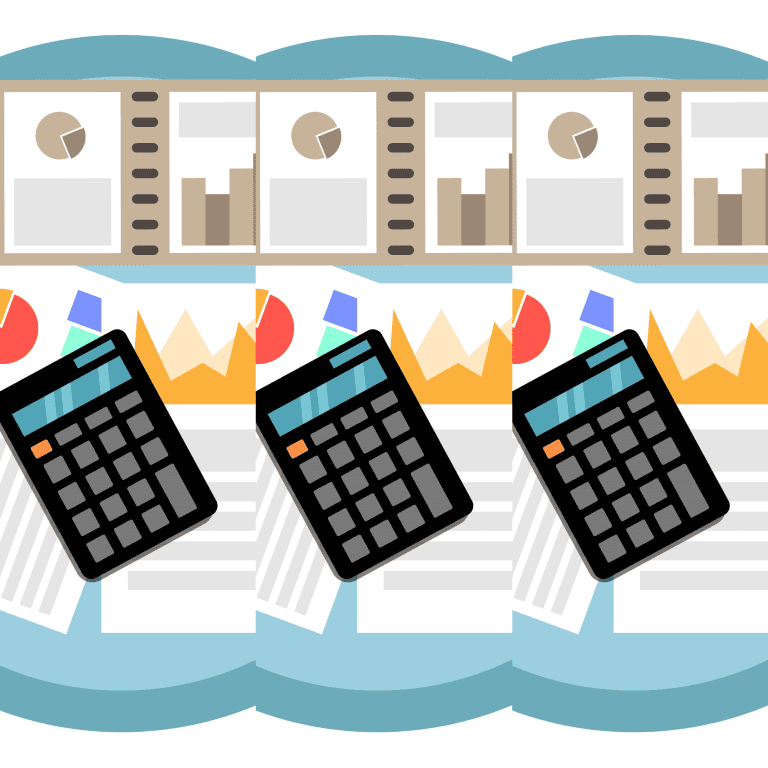How to Start Creating Digital Downloads in 2025 (Step-by-Step Guide for Beginners)
Last Updated on June 23, 2025 by Yadira Bacelic
This post may contain affiliate links, which means I’ll receive a commission if you purchase through my links at no extra cost to you. Please read the full disclosure for more information.

Introduction:
“With no inventory to manage and no shipping costs to stress over, digital products are a dream for making extra income.”
Creating Digital Downloads is one of the smartest ways to earn passive income whether you’re a stay-at-home mom, side hustler, or full-time creator. From printable planners to social media templates, the possibilities are endless and the best part? You can start with zero tech skills.
No inventory. No shipping. No limits on how many times your product can sell. It’s flexible, creative, and scalable.
In this guide, I’ll walk you through how to go from idea to income step by step. We’ll talk about tools, platforms, design tips, pricing strategies, and even mistakes to avoid, everything you need to start your own digital product journey with confidence.
What Are Digital Downloads? (And Why They’re So Profitable)
When I first got into creating digital downloads, I honestly thought it would be this complicated, tech-heavy process. But it turns out, designing something like a printable PDF or a PNG graphic is surprisingly beginner-friendly and seriously rewarding. Digital downloads are files your customer can buy and access instantly. No shipping. No packaging. No running to the post office with tape in your teeth.
Common formats include PDF (great for planners and trackers), PNG or JPEG (used for wall art and labels), and SVG (perfect for Cricut cut files). You create the product once, and it can sell over and over again, 24/7. That’s the magic of passive income with digital products.
But here’s what I learned the hard way: just because you’re creating digital downloads doesn’t mean you can skip testing.
One of my first digital products was a cash envelope printable. I was so excited to list it, but I didn’t actually do a test run before uploading it. Big mistake. A sweet customer bought it right away, but when she tried to fold it, the size was totally off. The flap didn’t line up, and it wouldn’t fold cleanly like a real envelope should.
She messaged me, and my heart sank.
I fixed it right away and sent her the corrected file, but the damage was done. She left a 4-star review said she appreciated my fast response and great customer service, but mentioned the sizing issue in her feedback. I was disappointed, not gonna lie. But it was also a powerful lesson: you’ve gotta test your files like a customer would. Print them, fold them, use them. Don’t assume.
That’s the beauty and responsibility of creating digital downloads:
No inventory or shipping
High profit margins
Easy to update and improve
But you still have to make sure it works for your audience
So now, before I list anything, I print it, cut it, fold it, and pretend I’m the buyer. It takes an extra 10 minutes but saves headaches (and stars) later. Mistakes will happen, especially in the beginning, but if you treat every product like a real experience for your customer, they’ll notice and they’ll come back.
Lesson learned, and I’m better for it.
How to Find the Right Customer for Your Digital Products
When I first started, I kept hearing that I needed to “find a niche.” But that word always felt a little disconnected to me like I was supposed to box myself into one tiny category and stick with it forever. What helped more was realizing I didn’t need a new customer for every product, I just needed to understand the one customer I already serve, and keep helping her as her life changes.
That mindset shift changed everything.
I remember designing one of my first budget trackers. It was soft, cute, and looked great on screen. But when I thought about the woman I was actually trying to help—a busy mom trying to take control of her finances, I realized I’d missed the mark. It didn’t have enough writing space, didn’t include categories she’d need, and wasn’t as user-friendly as it should’ve been. So I reworked it, updated the layout, and made it practical for her real life. That version started selling and it reminded me: she is who I’m designing for.
Now, every time I create something new, I do my research on how I can solve a problem my customer has not someone new, but the same woman I’ve been helping from day one.
Here’s how I do that:
- I think about what season of life she’s in maybe she’s
budgeting for back-to-school or trying to save for summer fun
- I look for pain points in her routine, finances, or planning habits
- I check Etsy, Pinterest, and real reviews to see what tools she’s using (and where they’re falling short)
- I ask myself: What would make her feel more confident, more organized, or more in control this month?
I want her to feel like my shop is made just for her. Like she can keep coming back and always find something useful, encouraging, or beautiful that fits her next step.
Because at the end of the day, I’m not chasing trends. I’m building a relationship with my customer. I’m growing with her. And every product I create is just another way to say: I see you. I’ve got something that might help.
Tools You Need to Create Digital Products
When I started, I didn’t have all the fancy programs or gadgets. Just Canva, Google Drive, and a big folder of trial-and-error ideas. I used to think I needed Adobe everything to make a “real” digital product but turns out, you can create beautiful, sellable printables with just a few free tools (and a little patience).
Canva was the first tool I used and it’s still my favorite. It’s super user-friendly, even if you’re not “techy,” and you can make everything from budget trackers to stickers and wall art. I used the free version for months before upgrading to Pro, and honestly, the extra features (like resizing and commercial fonts) are totally worth it once you’re ready.
For
And let’s talk about file organization for a second, because I definitely messed that up early on.
There was a time I had five different versions of one product saved all over my desktop. I got confused, uploaded the wrong one to Etsy, and didn’t realize it until a buyer messaged me saying something was off. Since then, I’ve made it a habit to name each file clearly (like “FloralCashEnvelopeSet_Finall”) and keep all my product assets in neatly labeled folders. It might sound small, but it saves so many headaches.
Here are the tools I use most:
- Canva (for design, templates, mockups)
- Google Sheets or Docs (for editable planners or trackers)
- Adobe Acrobat Reader (to double-check PDFs before uploading)
- TinyPNG or ILovePDF (for compressing files)
- ZIP file creator (for Etsy bundles or multi-page kits)
You don’t need everything at once. Start with what you have, keep things simple, and only invest in upgrades when your sales can cover the cost.
Trust me, you can go far with just a laptop, good design sense, and a heart for helping your customer.
Designing Digital Downloads That Stand Out
When I first started creating printable downloads, I was laser-focused on the visuals. Soft pastel colors, fun fonts, cute little design touches… I thought if it looked good, it would sell. But after uploading one of my first digital products, a printable gratitude planner, I learned a tough but important lesson: it also has to work.
My planner looked beautiful in Canva. But when I printed it? The lines were too tight, the font was way too light, and there wasn’t enough room to actually reflect and write. I realized I had focused more on aesthetics than usability. And that meant my ideal customer a busy woman trying to build a gratitude habit wasn’t going to find it helpful. Since then, I’ve approached designing printables with a totally different mindset.
Now, whether I’m working on a budget printable, financial tracker printable, or something more creative like a meal planner digital download, I focus on:
- Clear, readable fonts (even in black-and-white printing)
- Plenty of white space
- Logical, clutter-free layout
And let me just say: Canva is amazing, but you have to print-test your design before selling it. I always do a trial run now before listing any new PDF printable in my online printables business. Even just catching a small misalignment or spacing issue can make the product feel more polished and professional.
If you’re designing with Canva (which I highly recommend for beginners), here are a few of my favorite tips:
- Use “File → Show rulers and guides” to make sure everything’s aligned
- Stick to 1–2 fonts for a clean, cohesive look
- Keep your colors consistent across all your Canva printables to build a brand
- Make sure headings and trackers don’t feel crowded or overwhelming
Design isn’t just about what you love it’s about what will serve your customer. Whether you’re making teacher resources printables, student planners, or customizable templates for busy moms, your goal is to make their life easier.
Great design is simple, intentional, and functional. If your printable does that and looks good? You’ve just created one of the most profitable digital downloads you can sell.
Saving & Exporting Files Correctly
Here’s a little secret: you don’t need to be a tech genius to prep your digital downloads the right way but you do need to be careful. I’ve had a few close calls with wonky files, blurry prints, and even one oversized upload that Etsy straight-up rejected. Let’s avoid that.
One of my biggest early mistakes? Not understanding color modes. I thought everything had to be in CMYK because I kept seeing that in design tutorials. But here’s the truth: if your customer is printing at home or at a local copy shop, RGB is better. It’s the default mode for screens and works great with most basic printers. Canva designs are created in RGB by default, and that’s perfectly fine for most PDF printables or budget printables you’re selling on Etsy.
Here’s what I do now to make sure my files are ready:
- Export as PDF Print in Canva
- Set DPI to 300 for high-quality printing
- Leave color mode as RGB unless a buyer specifically needs CMYK for a pro print job
- Compress big files with TinyPNG or ILovePDF
- Use ZIP folders for larger bundles or multi-page kits
- Always test print your designs before listing
I also include a “How to Print” note for certain products, especially if I’m selling Google Sheets templates or anything that might confuse a beginner. It shows you care and it cuts down on emails asking for help.
Oh, and watch your file sizes! Etsy only lets you upload 20MB per file. If your printable download has a lot of pages or artwork, compress it or split it into multiple uploads.
This step may not feel creative, but it’s part of building a trustworthy digital product business. When customers get a clean file that opens, prints, and works the way they expected, they remember that.
Where to Sell Your Digital Downloads
There are so many options for selling digital products these days that it’s easy to get overwhelmed. When I first started, I thought I had to be everywhere Etsy, a website, social media, all at once. But trying to juggle too much too fast just left me spinning my wheels.
So I made the decision to focus on Etsy first, and I’m really glad I did.
If you’re just starting out with printable downloads, Etsy is one of the easiest places to launch. Whether you’re selling budget printables, PDF printables, organizer printables, or even teacher resources, there are already shoppers searching for those exact products every day.
Here’s why I recommend Etsy for beginners:
- It already has built-in traffic (hello, millions of shoppers!)
- The setup is simple (no tech stress or website needed)
- You can start with just a few products and build from there
- It gives you insight into what buyers are clicking, favoriting, and purchasing
Now, I don’t have a Shopify store (yet), but I do plan to explore it once I’m ready to add another income stream. Shopify is great for creating your own branded site, but it’s more hands-on and better suited for when you’ve already built up a small product line or email list. So if you’re not there yet, no rush.
If your products are educational like student planners, teacher printable downloads, or classroom labels you might want to look into Teachers Pay Teachers (TPT). It’s a great platform for reaching educators who are actively searching for resources.
And don’t underestimate the power of your own blog or email list. I’ve had people grab my free checklist and come back weeks later to purchase my
Start with one platform. Focus on helping your customer. Once you’re ready, you can grow from there.
Pricing Your Products for Profit
Let’s talk about one of the trickiest parts of selling digital products pricing. When I first started creating printable downloads, I was so unsure of what to charge. I didn’t want to scare anyone away with prices that felt too high… but I also didn’t want to underprice my work either. I’d see $1.99 listings and think, “Should I match that?” Spoiler: I shouldn’t have.
Here’s what I’ve learned: Pricing is about value, not just cost. You’re not just selling a PDF. You’re giving someone a solution. A way to get organized. A system that reduces stress.
In the beginning, it’s really about building momentum, getting those first few sales, collecting reviews, and eventually aiming for that Best Seller badge. And to do that, you’ll need to be competitive with your pricing. Let’s be real, no one knows who you are yet. So why would a customer pay full price for your product when they can get something similar from a shop with thousands of sales and glowing reviews?
That’s why your early focus should be on getting sales quickly, but not at the cost of your profits.
Don’t price your product so low that you’re losing money or barely covering Etsy’s listing and transaction fees. Instead, find a sweet spot that helps you stand out while still respecting the time and effort you put into your work. You also want to build a shop that provides value and utility, not just another cute printable. That’s how you stand out even against bigger shops.
Here’s what helps me decide on a price:
- I research similar Etsy digital products
- I bundle related items to increase perceived value
- I offer a basic version and a premium option
- I adjust pricing once I’ve built reviews and sales momentum
If your product saves time or solves a real problem, don’t be afraid to charge accordingly. You’re pricing for your target customer who needs what you’re offering.
And remember: you can always raise your prices later. Start smart, stay sustainable, and focus on building trust first.
Writing Product Listings That Convert
When I first started creating digital downloads, I spent so much time designing the actual product… and barely any time writing the listing. Big mistake. I’d slap a quick title on it, add a few rushed sentences in the description, and wonder why it wasn’t selling. Turns out, your product listing is just as important as the product itself.
Your title, tags, and description are what help customers find you, especially on Etsy. If you’re not showing up in search, you’re not getting clicks. If you’re not getting clicks, you’re not getting sales. It’s that simple.
Here’s what I’ve learned from rewriting dozens of my own listings:
- Use SEO-friendly keywords in your title and tags (like “budget printable,” “monthly
savings tracker,” or “student planner PDF”) - Lead with what it is and who it’s for: “Printable Budget Tracker for Teens” is clearer than “Cute Money Sheet”
- Think like a customer what would you type into the Etsy search bar?
In the description, I follow a simple formula:
Features → Benefits → How it Helps
For example, if I’m selling a
“Includes 4 printable trackers (budget,
Don’t forget to highlight what makes your product unique. Is it undated? Editable? Beginner-friendly? Designed with pastel colors or a specific lifestyle in mind? These little details help you stand out.
When it comes to images, mockups are great, but real photos are even better. If you can, print out your digital download, fill it out, and take pictures of it in use. Lay it on your desk with a pen, show it inside a binder, or stage it in natural lighting. Customers love seeing how your product will actually look and feel in their own hands.
If you’re creating digital downloads that solve real-life problems, let your listing reflect that. Be clear, be helpful, and show how your product makes their life easier.
Promoting Your Digital Downloads
So you’ve finished creating digital downloads, listed them on Etsy, added pretty images, and then waited… and waited. Yep, I’ve been there. I thought uploading my PDF printables would instantly lead to sales. But here’s the truth: even the most helpful Etsy digital products won’t sell if no one sees them.
Promotion is just as important as design. And no, you don’t need a massive following or paid ads. You just need consistency and strategy.
Here’s what’s worked for me when promoting my printable downloads:
- Pinterest is my top traffic driver. I design vertical pins in Canva using soft pastel templates that match my brand. I include keyword-rich titles like “Budget Printables for Beginners” or “How to Use a PDF Printable to Organize Your Finances,” and link them straight to my Etsy listing or blog post.
👉 Quick tip: You can also pin directly from your Etsy listing using the Pinterest Chrome extension. Just click the red Save button while viewing your listing, pick the right board, and you’re done! This makes it easy to promote your product right after publishing. - Instagram is where I connect. I post my Canva printables in action—printed, filled out, or styled in flat lays. I also share sneak peeks of upcoming organizer printables, or short Reels that walk through my digital download business process.
- Facebook groups are great for relationship-based marketing. I join
budgeting , planner, and teacher communities and contribute value, sharing tips or free resources instead of just selling. That trust turns into traffic. - Email is where the magic happens long-term. I offer a free checklist on how to start a side hustle, and when people sign up, I send helpful tips, product launches, and occasional sales. This way, I’m building an audience that’s interested in creating extra income, and many of them are the same people who buy my budget printables and other Etsy digital products.
And don’t sleep on repurposing! One pin can become an Instagram post, a blog tutorial, or a tip for your email list. I’ve reused content across platforms to save time and keep my voice consistent.
You don’t need to promote everywhere. Just focus on doing a few things well. The key is to keep sharing, keep showing up, and remind people how your digital products can help them.

Mistakes to Avoid When Creating Digital Downloads
When I started creating digital downloads, I made just about every beginner mistake in the book and honestly, I’m thankful. Every mistake taught me how to improve my designs, serve my customers better, and build a stronger digital download business.
One of my earliest slip-ups? Not test printing my product before listing it. I uploaded a pastel cash envelope printable I made in Canva. It looked perfect on screen. But when a customer printed and folded it, the sizing was off, and it didn’t fold correctly. She left a 4-star review. Thankfully, she appreciated my quick response and fix, but I learned right then: always test your printable downloads like your customer would.
Another big one? Using licensed graphics without fully understanding the license. Just because an element is available in Canva or on a design marketplace doesn’t mean you can use it however you want.
If you’re using graphics, illustrations, fonts, or templates, always check whether it comes with a commercial license. Even then, most platforms (including Canva and Creative Fabrica) require that you make substantial modifications. That means you can’t just drop a premade design onto a page and list it you have to make it your own.
Ask yourself:
- Did I combine different elements in a creative way?
- Does it solve a specific problem, like helping someone budget or plan?
- Can someone recognize my style just by looking at it?
And if you’re selling on Etsy, please make sure to read their Creative Asset Standards and seller policies. Etsy is cracking down on listings that use unaltered third-party graphics or violate commercial-use terms. Protect your shop by understanding what’s allowed and how to use assets correctly.
Other mistakes I’ve learned from:
- Forgetting to flatten files, which lets customers accidentally move things
- Using too many fonts or colors, pretty but not always printable
- Not including instructions, especially for editable files or Google Sheets templates
- Overthinking and delaying my launch because it wasn’t perfect
Creating digital downloads that are profitable isn’t about perfection. It’s about showing up, learning as you go, and building something that helps your customer.
Conclusion:
Creating digital downloads is one of the best decisions I’ve made in my business. It gave me flexibility, a new income stream, and a way to help real people with real problems—whether they’re
And the truth? You don’t have to be perfect. You just have to be willing to learn, test, and keep going. From choosing the right tools to designing, pricing, and promoting your product, each step gets easier the more you do it.
If there’s one thing I want you to remember, it’s this: start with your customer. Think about what she needs, how she lives, and what would make her day a little easier. That’s where your best digital products will come from, not just from trends, but from intention.
Whether you’re selling budget printables, student planners, organizer printables, or something totally unique focus on being helpful. Focus on making something that works. That’s what sets your product apart in a sea of sameness.
And don’t forget: your first product won’t be your last. You’ll grow, you’ll tweak, and you’ll get better with every listing. It’s all part of the journey.
So if you’re still sitting on that idea, waiting for the “perfect time,” this is it. Create it. Launch it. Learn from it.
Need a little extra help getting started? Grab my free checklist:
👉 10 Steps to Start a Side Hustle – it’ll walk you through the mindset, tools, and first steps to start building the income stream you’ve been dreaming about.
Other Posts You May Like








